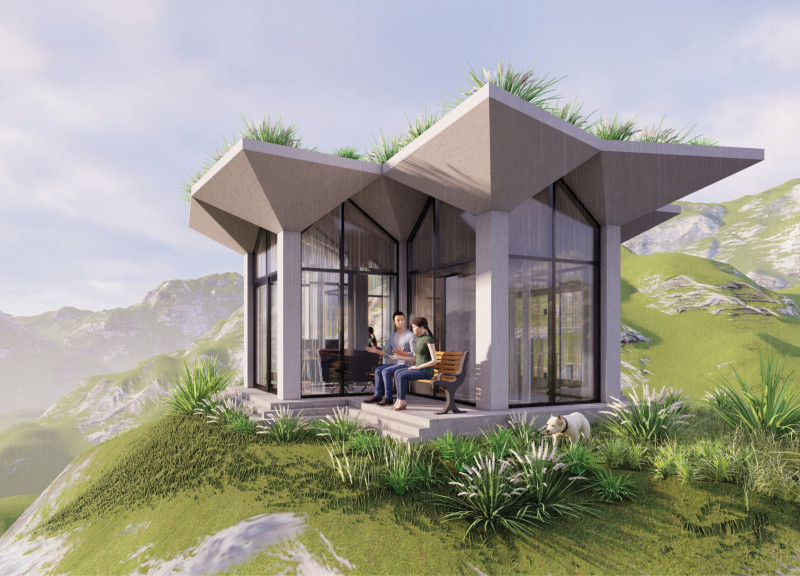5 key facts about this project
The building is designed to fulfill [insert function, e.g., residential, cultural, commercial], establishing a harmonious relationship between the interior spaces and the external environment. The layout carefully considers the flow of activities, with spaces designed for both communal interaction and individual privacy, ensuring that it can accommodate the diverse needs of its inhabitants or visitors.
From the outset, the project embraces a clear architectural language characterized by clean lines and a cohesive material palette. The structure utilizes a blend of concrete, glass, and sustainable timber, reflecting a commitment to both durability and ecological awareness. The use of reinforced concrete provides a robust framework, while large expanses of low-emissivity glass enhance natural light penetration, creating a warm and inviting interior. This deliberate choice of materials not only contributes to the aesthetic appeal but also aligns with modern sustainability standards, promoting energy efficiency and reducing the ecological footprint.
Distinctive features of the design include its spatial organization, which thoughtfully addresses both functionality and user experience. Internal zones are delineated through subtle shifts in ceiling height and the use of partitions, guiding occupants through the building while maintaining a sense of openness. The integration of green spaces, whether in the form of landscaped courtyards or green roofs, further enriches the environment, fostering a connection with nature that directly benefits mental well-being and encourages outdoor engagement.
The architecture reflects a deep understanding of its geographical context, with considerations for local climate and culture integrated into the overall design. For instance, the façade not only enhances visual dynamics through its interplay of materials and textures but also responds to climatic conditions by incorporating awnings and overhangs that provide shade during intense sunlight while allowing solar gain in cooler months. This thoughtful approach underscores the project’s role as a practical and responsive entity within its setting.
A unique aspect of this design lies in its ability to facilitate community engagement. The inclusion of public spaces, such as plazas or gathering areas, invites interaction and creates a welcoming atmosphere. This encourages a sense of ownership among users and strengthens community ties, making the project not just a structure but a vital part of the local social fabric.
Innovation is evident in the project’s use of technology as well. Smart building systems have been integrated to enhance security, energy management, and user comfort, illustrating a forward-thinking approach to architecture that resonates with contemporary lifestyle demands. Moreover, the architectural design choices reflect a commitment to long-term sustainability, ensuring that future generations will benefit from adaptive, resilient spaces.
As you explore the architectural plans and sections of this project, you will gain deeper insights into the strategic design decisions that shaped its form and functionality. The architectural designs articulate a narrative that goes beyond mere construction, encapsulating a comprehensive vision that respects and enhances the environment it occupies. This analysis invites you to delve into the nuances and intricacies of the project, uncovering the thought processes and architectural ideas that inform its conception and realization. Understanding these elements can enrich your appreciation for contemporary architectural practice and its impact on the built environment.


























